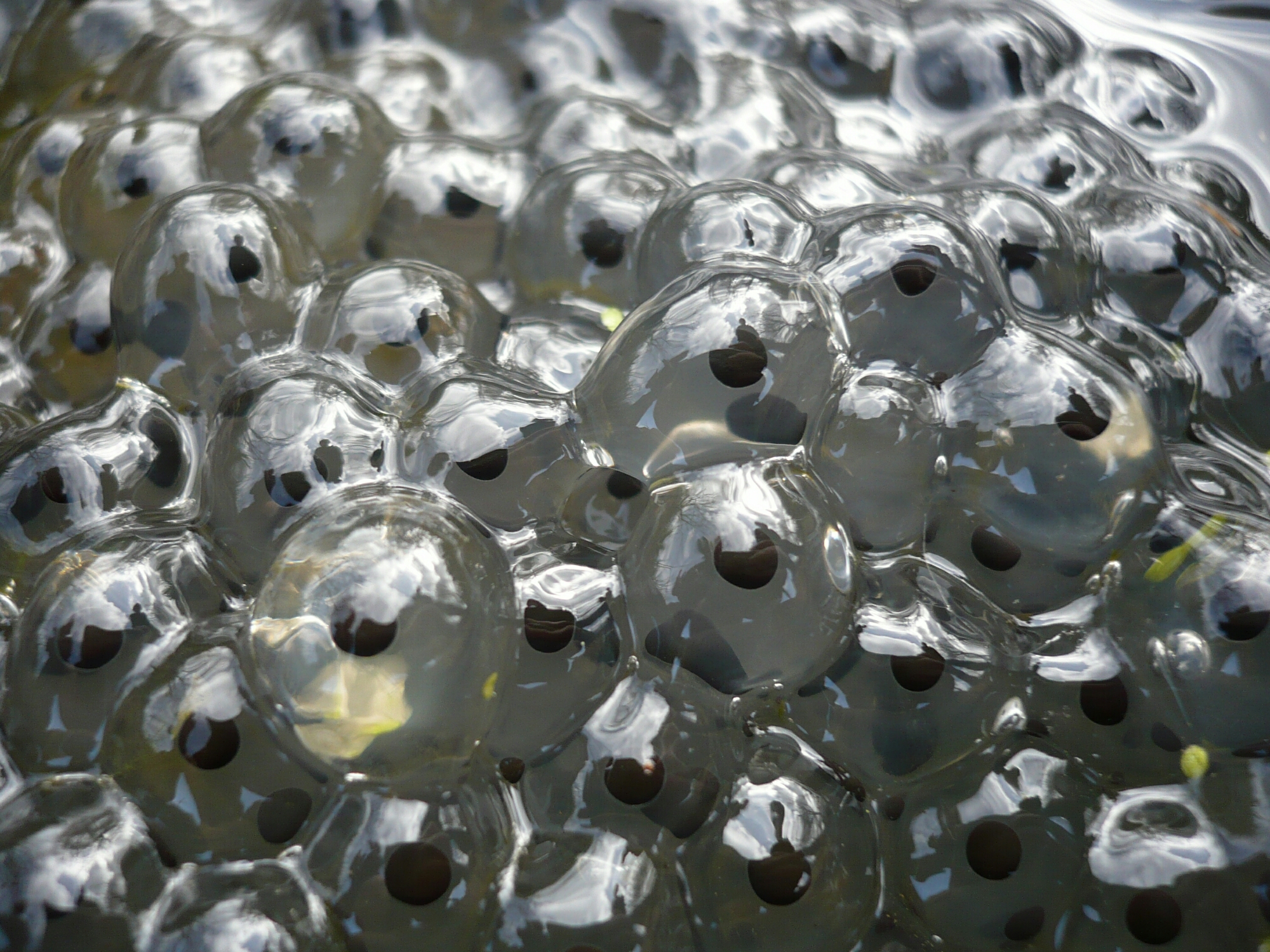All, Biotopes, Coldwater Facts, Fish Facts, Frequently Asked Questions, Plant Facts
Frogspawn in my pond – What Do I Do?
You may find that you suddenly have either frogspawn or toadspawn somewhere in your garden, whether it’s in a pond, water feature or bucket. As the temperature and sunlight is steadily increasing you may even notice it hatch.
Here’s a list of Do’s and Don’t’s.
1.DO provide some cover if there isn’t any
Up to 90% of the eggs, tadpoles or froglets in the pond are lost to predators (dragonfly larva, water boatmen, snakes or birds). This can occur when the eggs float exposed at the surface and when the young tadpoles graze on plankton in the shallow water on the edge of the pond.
It is therefore important to provide some cover when you can, most notably around the sides where the young frogs are at their most vulnerable.
This can be achieved with floating oxygenator weeds such as Elodia or Hornwort or small native marsh plants such as Myosotis (Water Forget-Me-Not) or Ranunculus (Water Buttercup). These plants will offer food as well as cover (pondweed being the best example of this).


2. DON’T move unless absolutely necessary.
Frogspawn and Toadspawn are very delicate and part of their defence is the ability to cling to each other in a bunch. Any movement on your part is likely to dislodge eggs that will be easy prey for newts, carnivourous insects such as Dragonflies, birds and fish. It’s best to leave it as it is. Do not take it out even if the tadpoles have hatched, they will keep returning to feed on the protein-rich jelly will compiles the egg until they can independently hunt for food.
You may be tempted to give your frogspawn to someone else or pluck some eggs from a nearby river, pond or lake for your own garden. This is generally not a good idea, aswell as it being illegal it can easily spread disease and infection such as Chytrids (an amphibian fungus that affects their skin, quickly killing them).

Amphibians and pond life will gradually colonise a pond or environment providing that it is adequate, there is no need to get spawn from elsewhere.
If you do, however, need to move spawn, tadpoles or young frogs, always be wary about drastic temperature changes. If cleaning a pond out and you have to move some into a bucket, use water from the pond to ensure the same condition and temperature. Never put tadpoles or eggs into chlorinated water, as this is likely to be fatal.
3. DO make sure that there is some way for small froglets to get out of the pond.
Although it’s often said that “it got in so it can get out” with wildlife, this doesn’t apply as much with young frogs that may not have the level of agility or strength as older frogs. Therefore it is important to offer a dead branch or pile of pebbles as a bridge between the land and water. Although they have been fully aquatic up to that point in their lives, young frogs will get out as soon as they can to explore their surroundings and avoid predators.
4. DO rejoice! You have successfully created and maintained a suitable breeding habitat for a fascinating native species.
Don’t take it too seriously, don’t worry too much about them. Just make sure they’ve got good cover and protection. Don’t introduce any harmful trauma, pathogens or potentially predatory species and you’re fine!



